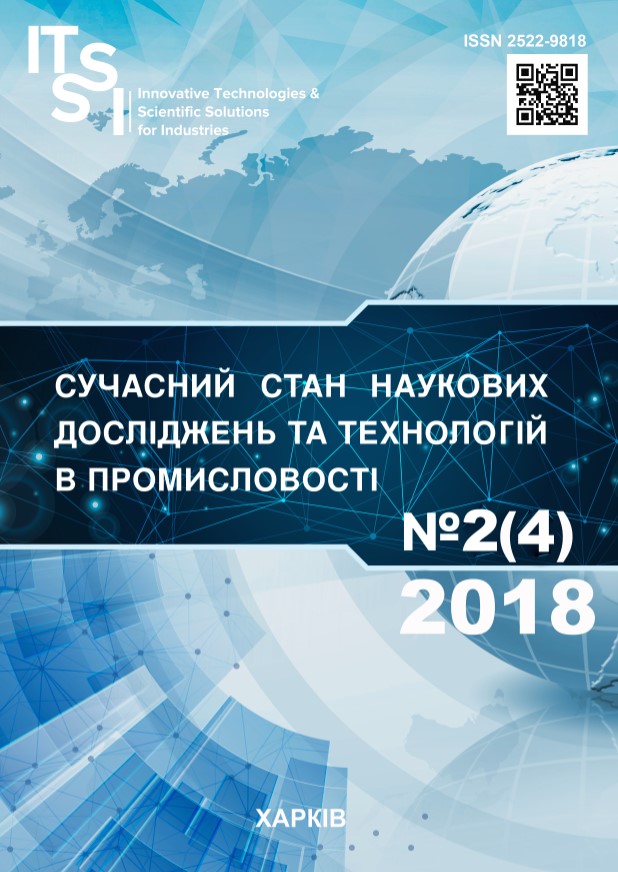ART-INDUSTRY MARKET INFRASTRUCTURE: THE ANALYSIS OF MODERN STRUCTURE AND FUNCTIONS
DOI:
https://doi.org/10.30837/2522-9818.2018.4.034Keywords:
the art industry market infrastructure, the primary art market, the secondary art market, art assets, the provenance of an art object, auction houses, art dealers, estimate, auction tenders, patronage, engagement, motives for acquiring art objectsAbstract
The subject matter of the article is the infrastructure of the art industry market. The goal to substantiate scientific and methodological foundations for the development of the art market infrastructure in the process of its formation and development and to identify key actors in the art market basing on the generalization of international experience. Objectives: auction houses were classified, the features of work of the main subjects of the art market were specified, the motives for acquiring art objects and the features of the art market were systematized and the main indices of the art market were analyzed. Methods: the abstract and logical analysis, theoretical generalization, the system and statistical analysis. The following results are obtained: auction houses in the art industry market were classified by levels and countries, the annual sales volume, the number of lots sold, and the market share were determined; the features of auction trades in the art market were specified; the role of art dealers in the social and communicative system "artist-work-public" in three categories is revealed within the art market; special attention was paid to the patronage in the sphere of cultural mediation in the art industry market; art assets were ranked according to the level of profitability; motives for acquiring art objects were systematized and irrational motives for art investment were identified; the features of the art market were identified and systematized, the main indicators of the art market were analyzed. Conclusions. The art market is considered as a semi-functional phenomenon, which acts as a regulator of relations between artists and the public. It synchronously fulfils a number of social functions: informational, intermediary, pricing, motivating, regulating, social and cultural ones. One of the main conditions for the successful functioning of the art industry market is the formation and development of its infrastructure. The modern art market is characterized by high profitability, low liquidity and long-term profitability.References
Indutnyi, V. V. (2014), " Markets of Cultural Values: Comparative Analysis " ["Rynky kulturnykh tsinnostei: porivnialnyi analiz"], Visnyk natsionalnoi akademii kerivnykh kadriv kultury i mystetstv, No. 1, P. 19–27.
Skatershchikov, S. (2006), Guide to investing in the art market [Rukovodstvo po investirovaniyu na rynke predmetov iskusstva], Al’pina Biznes Buks, Moscow, 224 p.
Burnashov, I. Yu. (2013), Modern fine art and art market in Ukraine (overview information on press materials and unpublished materials 2012-2013) [Suchasne obrazotvorche mystetstvo ta art-rynok v Ukraini (ohliadova dovidka za materialamy presy ta neopublikovanymy materialamy 2012–2013 rr.)], Kyiv: Informatsiinyi tsentr z pytan kultury ta mystetstva, 21 p., available at : http://nplu.org/storage/files/Infocentr/Tematich_ogliadi/2013/Art13.1.pdf (last accessed 1.07.2018).
Platonov, B. O. (2013), Fundamentals of valuation activity: textbook [Osnovy otsinochnoi diialnosti: pidruchnyk], Kyiv: NAKKKiM, 227 p.
On Copyright and Related Rights: Law of Ukraine of 23.12.93 amended No. 3793-XII [Pro avtorske pravo i sumizhni prava : Zakon Ukrainy vid 23.12.93 iz zminamy No. 3793-XII], available at : URL:http://zakon3.rada.gov.ua/laws/show/3792-12 (last accessed 1.07.2018).
Dymshyts, E. (2007), "Keep your money in paintings" ["Zberihaite hroshi v polotnakh"], Fine Art, No. 1, P. 26–33.
Dossi, P. (2011), Sold! Art and money [Prodano! Iskusstvo i den’gi], St. Petersburg, Limbus Press, 288 p.
Dossi, P. Art market watch speed! Money and the global art market, available at : http://www.artnet.com/magazineus/features/dossi/money-and-the-global-art-market-5-29-12.asp (last accessed 1.07.2018).
Golovanova, M., Lebedchenko, V. (2018), "The use of economic and mathematical models to determine the market capacity" ["Ispol’zovanie ekonomiko-matematicheskikh modeley dlya opredeleniya emkosti rynka"], Innovative Technologies and Scientific Solutions for Industries, No. 1 (3), P. 71–81. Doi: https://doi.org/10.30837/2522-9818.2018.3.071.
Litvinenko, A., Dorokhov, Ye. (2018), "The economic essence of accounting for financial investments and prospects "blockchain" to control investment activity in Ukraine" ["Ekonomicheskaya sushchnost’ ucheta finansovykh investitsiy i perspektivy ispol’zovaniya "blockchain" dlya kontrolya investitsionnoy deyatel’nosti v Ukraine"], Innovative Technologies and Scientific Solutions for Industries, No. 1 (3), P. 103-108. Doi: https://doi.org/10.30837/2522-9818.2018.3.103.
Downloads
Published
How to Cite
Issue
Section
License
Copyright (c) 2018 Тетяна Валеріївна Момот, Дарина Тарасівна Момот

This work is licensed under a Creative Commons Attribution-NonCommercial-ShareAlike 4.0 International License.
Our journal abides by the Creative Commons copyright rights and permissions for open access journals.
Authors who publish with this journal agree to the following terms:
Authors hold the copyright without restrictions and grant the journal right of first publication with the work simultaneously licensed under a Creative Commons Attribution-NonCommercial-ShareAlike 4.0 International License (CC BY-NC-SA 4.0) that allows others to share the work with an acknowledgment of the work's authorship and initial publication in this journal.
Authors are able to enter into separate, additional contractual arrangements for the non-commercial and non-exclusive distribution of the journal's published version of the work (e.g., post it to an institutional repository or publish it in a book), with an acknowledgment of its initial publication in this journal.
Authors are permitted and encouraged to post their published work online (e.g., in institutional repositories or on their website) as it can lead to productive exchanges, as well as earlier and greater citation of published work.














